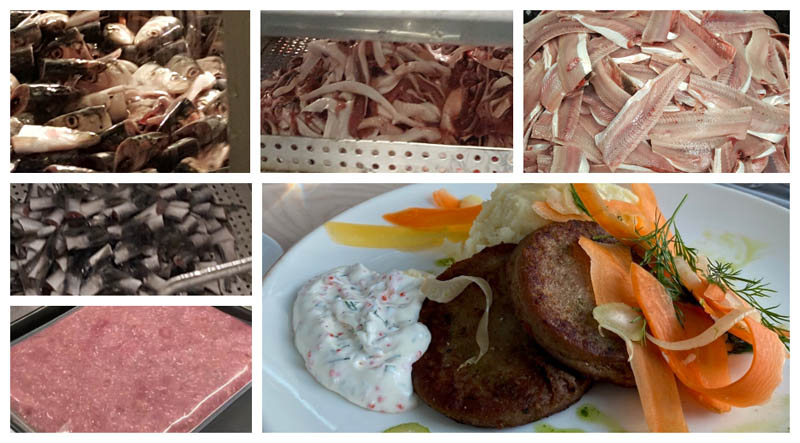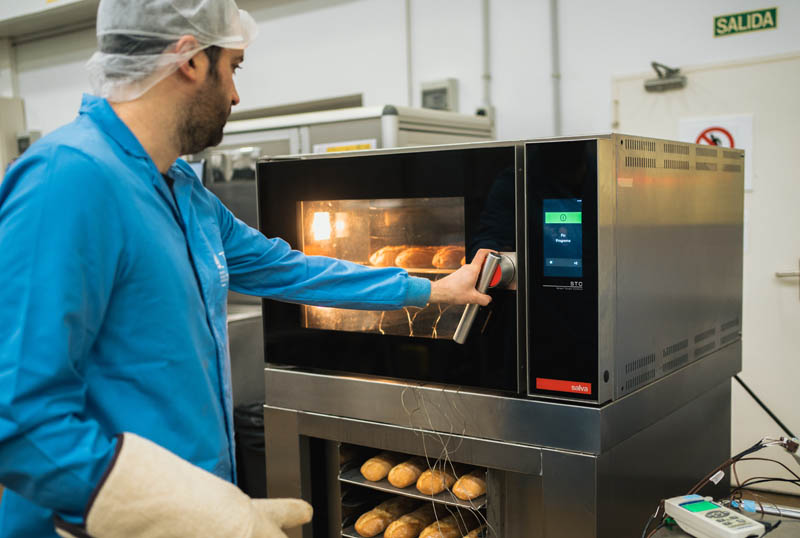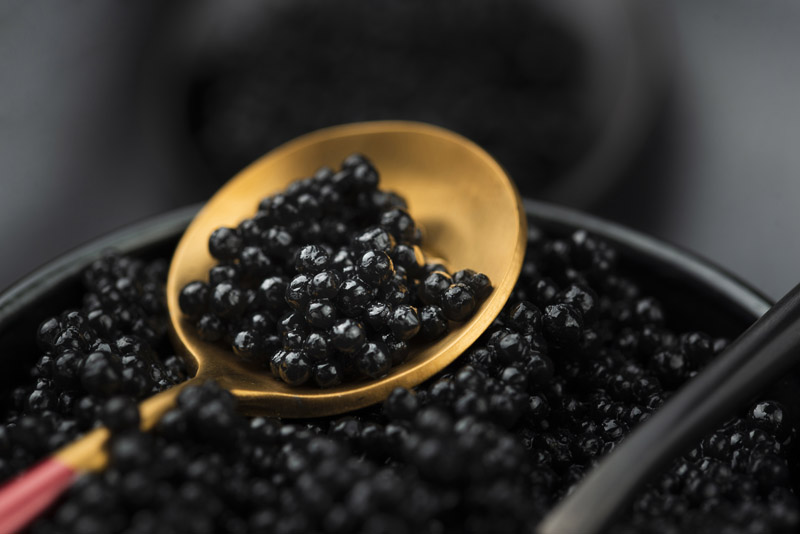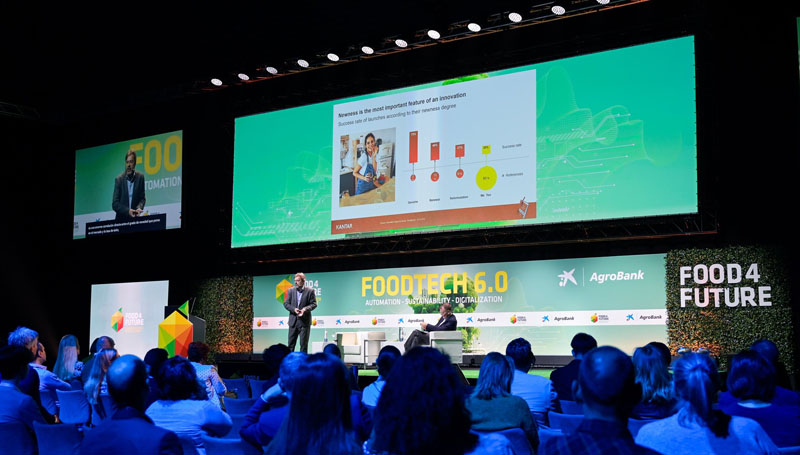New fish “cuts” to develop innovative, healthy and tasty seafood with all fractions from head to tail
Últimas noticias
An LGTBIQ+ perspective on the animal kingdom
Una mirada LGTBIQ+ al reino animal
Circular Economy in Action: Valorisation of By-products through Projects like PRIMA NEWFEED
- New sorting technology has been developed by re-building a filleting line for pelagic fish, which now fractionates and separates the fish into 5 different clean parts.
- This technological improvement allows the product yield of these companies to be increased and where previously only fish fillets were produced, five other products are now available for valuable uses.
- From fractions managed in food quality, a wide range of possibilities opens up for recovery options with applications in pharmaceutical, nutraceutical, human or animal food.
Derio, 18 July 2022. When filleting pelagic fish, the common practice is to collect all off-cuts such as heads, viscera, tails and backbones in one bin. This immediately reduces the quality of the off-cuts as they become contaminated with e.g. blood, enzymes and residues from the intestines. Consequently, the use and value become limited, which is why the off-cuts typically are sold for feed production.
However, if handled correctly, there is great potential for using the off-cuts for more valuable purposes such as high-quality food ingredients, as a source of protein or as compounds with bioactivity.
This requires a change in the existing logistics – a challenge, which the partners of the WaSeaBi project, funded by the HORIZON 2020 funds of the European Union’s Framework Programme for Research and Innovation, taken up by developing a new sorting technology that makes it possible the separation of different fish fractions, in addition to the fillet, and the production of valuable products using these fractions such as patties, flavourings or bioactive peptides.
Índice de contenidos
From 1 to 5 different cuts of the fish
The new sorting technology has been developed by re-building a filleting line for pelagic fish, which now fractionates and separates the fish into 5 different clean parts.
The sorting technology has successfully been implemented at the herring processing company Sweden Pelagic AB in close cooperation with Chalmers University of Technology.
This means that Sweden Pelagic AB now has 5 cuts instead of one, which they can sell for subsequent production of food raw materials and ingredients such as minces, protein isolates, hydrolysates and oils.
“The grading technology gives us many more possibilities to develop new, healthy and tasty fish products. In the long term, we expect it to provide us with better revenues,” says Martin Kuhlin, managing director of Sweden Pelagic AB, one of the industry partners.
And the sorting technology can also be applied to other fish species, however, Martin Kuhlin points to a challenge in the fish industry:
“I really believe that we, in the fish industry, are way behind for example the meat industry. They have for a long time been very good at taking care of the whole animal in a much better way than ‘our’ industry.”
Ingrid Undeland, Professor of Food Science at the Department of Biology and Biological Engineering at Chalmers University of Technology, who has been working on the technology adds that
“It is of course important that the off-cuts are handled just as carefully as the main product i.e. the fillet, where focus is on preserving the quality throughout the whole value chain. Thus, instead of seeing the off-cuts as side-streams or by-products, which indicates that they are “leftovers”, they should be seen as just another cut of the fish – just like in the meat industry.”
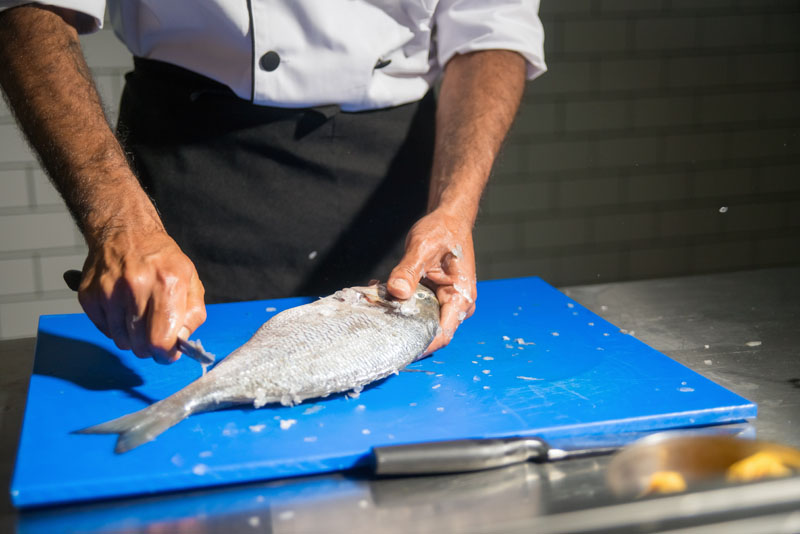
From 1 product to a catalogue of options
This technological improvement allows the product yield of these companies to be increased and where previously only fish fillets were produced, five other products are now available for valuable uses.
One of the first developments addressed has been the production of fish “pulp” or “mince” which is extracted from the fraction adhering to the scrapes after the fillets have been removed.
“I think that it will give us great advantages in the future. The technology will make it possible to extend our product range. This year, we estimate that we will produce around 200 – 300 tons of ‘herring mince’, and the ambition is to increase that number every year.” says Kuhlin.
In addition to the possibility of developing new products, increasing the revenue and extending the product range, Martin Kuhlin also thinks that via the sorting technology they will be able to market their products towards new consumer groups.
“In the first case, we will sell the products to the industrial customers, who manufacture pan-ready or eat-ready products. But we have experienced that also school kitchens and “public meal producers” have a great interest in the mince.”
Other developments made in the project include processes for recovery and transformation of lipid, protein and mineral fractions for the production of innovative products.
“From fractions managed in food quality, a wide range of possibilities opens up for recovery options with applications in pharmaceutical, nutraceutical, human or animal food,” says Bruno Iñarra, a researcher at the AZTI technology centre.
In the WaSeaBi project, both the AZTI technology centre and the Technical University of Denmark (DTU) have worked on obtaining fish flavourings, the production of bioactive compounds and natural supplements from different fractions of different types of fish such as cod, salmon, hake or the aforementioned herring.
Of all the developments, the most promising have been selected and during the course of this year industrial pilots will be carried out to validate both the processes and the products.
